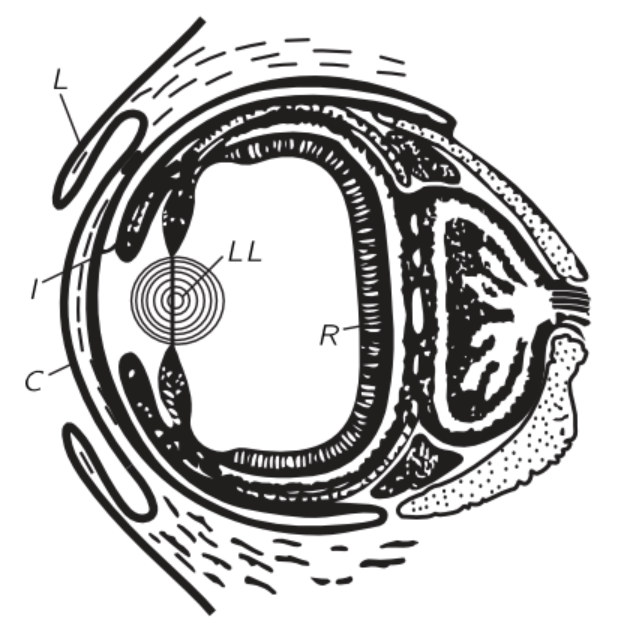
Other eyes
 المؤلف:
Richard Feynman, Robert Leighton and Matthew Sands
المؤلف:
Richard Feynman, Robert Leighton and Matthew Sands
 المصدر:
The Feynman Lectures on Physics
المصدر:
The Feynman Lectures on Physics
 الجزء والصفحة:
Volume I, Chapter 36
الجزء والصفحة:
Volume I, Chapter 36
 2024-04-17
2024-04-17
 1870
1870
Besides the bees, many other animals can see color. Fish, butterflies, birds, and reptiles can see color, but it is believed that most mammals cannot. The primates can see color. The birds certainly see color, and that accounts for the colors of birds. There would be no point in having such brilliantly colored males if the females could not notice it! That is, the evolution of the sexual “whatever it is” that the birds have is a result of the female being able to see color. So next time we look at a peacock and think of what a brilliant display of gorgeous color it is, and how delicate all the colors are, and what a wonderful aesthetic sense it takes to appreciate all that, we should not compliment the peacock, but should compliment the visual acuity and aesthetic sense of the peahen, because that is what has generated the beautiful scene!

Fig. 36–10. The eye of an octopus.
All invertebrates have poorly developed eyes or compound eyes, but all the vertebrates have eyes very similar to our own, with one exception. If we consider the highest form of animal, we usually say, “Here we are!,” but if we take a less prejudiced point of view and restrict ourselves to the invertebrates, so that we cannot include ourselves, and ask what is the highest invertebrate animal, most zoologists agree that the octopus is the highest animal! It is very interesting that, besides the development of its brain and its reactions and so on, which are rather good for an invertebrate, it has also developed, independently, a different eye. It is not a compound eye or an eye spot—it has a cornea, it has lids, it has an iris, it has a lens, it has two regions of water, it has a retina behind. It is essentially the same as the eye of the vertebrates! It is a remarkable example of a coincidence in evolution where nature has twice discovered the same solution to a problem, with one slight improvement. In the octopus it also turns out, amazingly, that the retina is a piece of the brain that has come out in the same way in its embryonic development as is true for vertebrates, but the interesting thing which is different is that the cells which are sensitive to light are on the inside, and the cells which do the calculation are in back of them, rather than “inside out,” as in our eye. So we see, at least, that there is no good reason for its being inside out. The other time nature tried it, she got it straightened out! (See Fig. 36–10.) The biggest eyes in the world are those of the giant squid; they have been found up to 15 inches in diameter!
 الاكثر قراءة في الفيزياء الحيوية
الاكثر قراءة في الفيزياء الحيوية
 اخر الاخبار
اخر الاخبار
اخبار العتبة العباسية المقدسة


